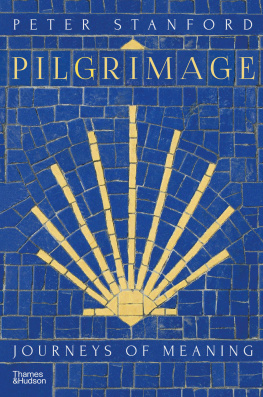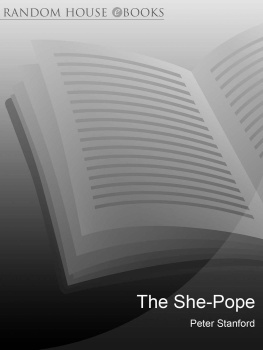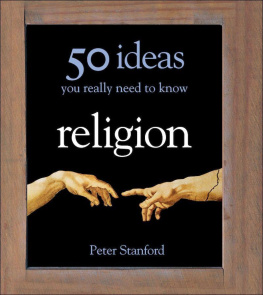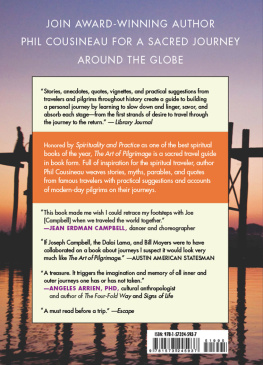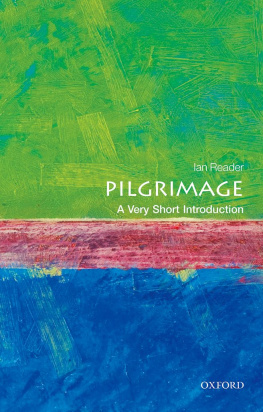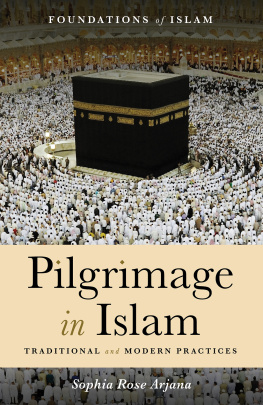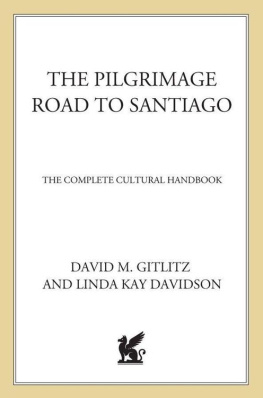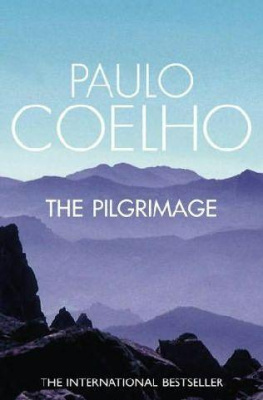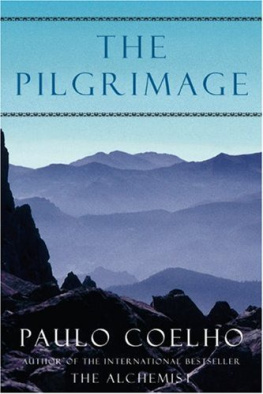

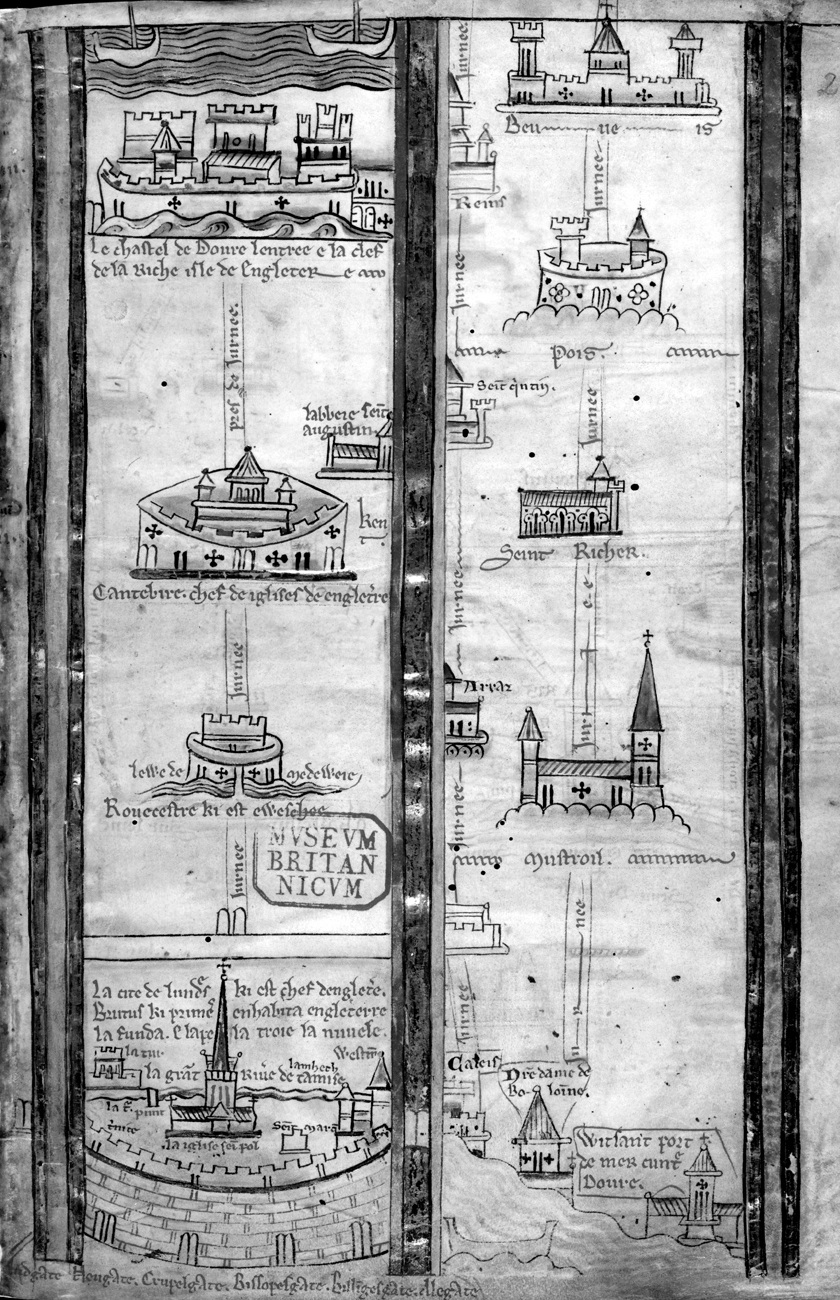
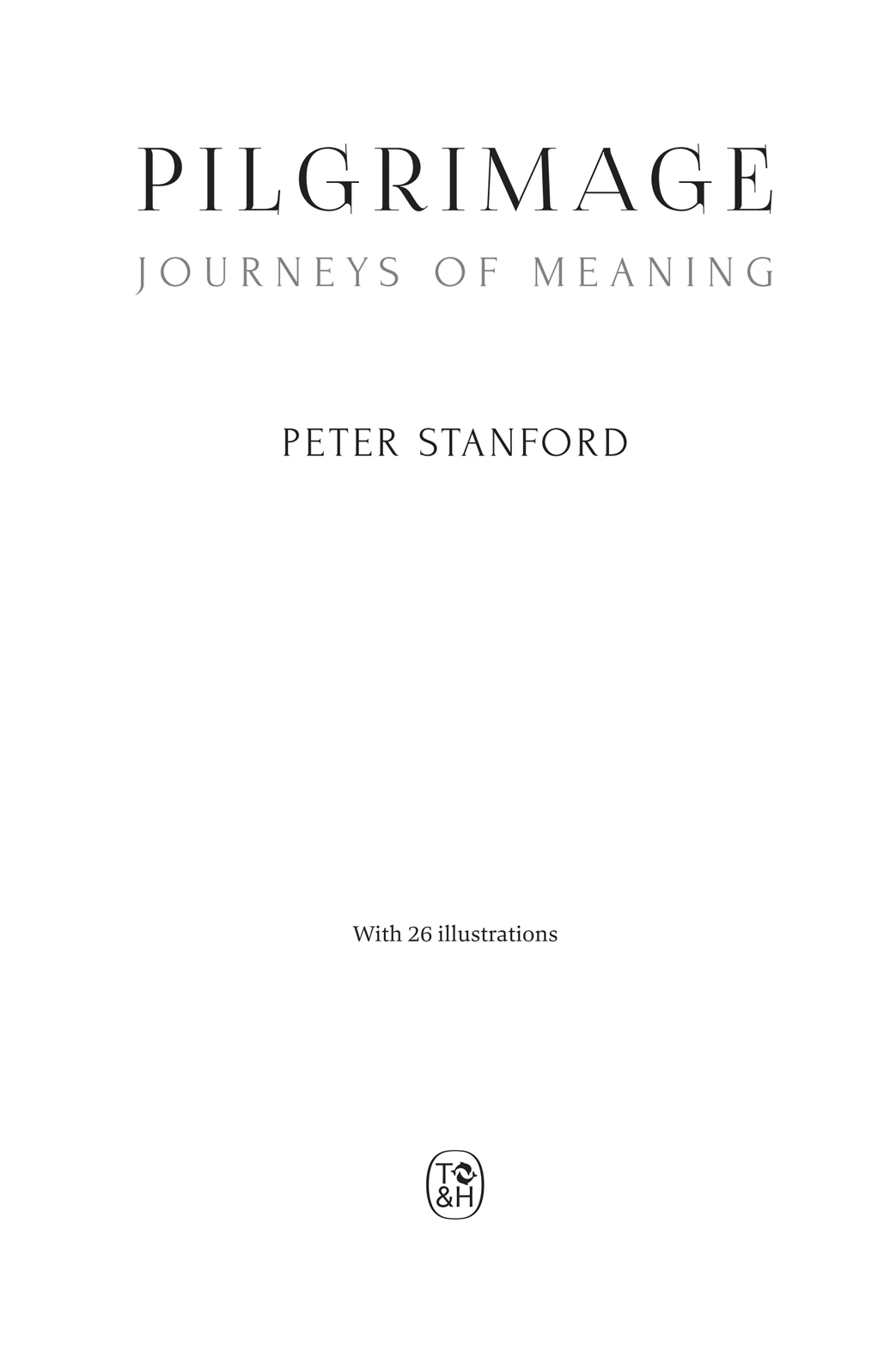
To Kitthe best of pilgrimage companions
About the Author:
Peter Stanford is an award-winning writer, journalist and broadcaster. His investigations into the history, theology and cultural significance of religious ideas include Judas: The Troubling History of the Renegade Apostle, Martin Luther: Catholic Dissident and Angels: A Visible and Invisible History. He is a former editor of the Catholic Herald, and writes for the Daily and Sunday Telegraph titles, and The Tablet. He is director of the Longford Trust for prison reform. www.peterstanford.org
Other titles of interest published by
Thames & Hudson include:
Spirit of Place
Susan Owens
Great Cities Through Travellers Eyes
Peter Furtado
The Great Cities in History
John Julius Norwich
Be the first to know about our new releases,
exclusive content and author events by visiting
www.thamesandhudson.com
www.thamesandhudsonusa.com
www.thamesandhudson.com.au
CONTENTS

For in their hearts doth Nature stir them so,
Then people long on pilgrimage to go,
And palmers to be seeking foreign strands,
To distant shrines renowned in sundry lands.
GEOFFREY CHAUCER, THE CANTERBURY TALES (c. 13871400)
My initiation into the time-honoured religious ritual of pilgrimage came as a naive 17-year-old. A group of us from my Catholic school in Liverpool travelled to Lourdes in France. We had all grown up being told about how, since 1858, when the Virgin Mary had appeared there to the young Bernadette Soubirous, this shrine had been an otherworldly place, linked by an invisible thread to heaven. Spiritual and even physical illnesses could be cured by bathing in the waters that Jesus mother had caused to gush into a grotto.
Though in my narrow, traditional Catholic world of the time I didnt know it, I was also stepping out on that journey in the footsteps of millions of pilgrims down the ages who have headed off in the search for meaning along well-trodden paths to holy spots around the globe associated with their gods. And some not quite so well-trodden. At the end of the sixth century BCE, 29-year-old Siddhartha Gotama, better known as the Buddha, left behind his wife and newborn child in what is now Nepal, donning the yellow robes of a monk, and walked and walked for six years until he achieved enlightenment. The tree under which it happened is now the pre-eminent place of pilgrimage for the worlds Buddhists.
All faiths embrace, to varying degrees, the concept of pilgrimage. Islam makes the journey to Mecca for hajj a religious obligation. Fuelling the physical efforts of those who make such treks has been the hope, sometimes nurtured in silence, other times loudly chanted or sung, that at journeys end there will dawn some new understanding or perspective on everyday existence and humanitys place in a bigger scheme. Or, at the very least, a sense of being touched by divine forces that in that particular location will be much more accessible than in the daily routine of life. All such sites are regarded as thin places, set apart from the world, moving to a different drum, and possessed of an innately special atmosphere because of their connection to another, higher dimension. When there, the distinction between the visible and the invisible can fade, and a door open onto another mind-set.
Again, I say this with the benefit of hindsight. I could hardly have articulated it in such terms back then, much less associated what I was doing by going to Lourdes with this global movement. Our by-the-Good-Book religion lessons in the late 1970s stretched little further than the stark Q&A formulas of the Penny Catechism. Moreover, there were on our trip concessions to modernity that distanced it from those earlier generations of pilgrims. We werent donning sackcloth and ashes to trudge the distance on foot over several weeks, and we werent carrying palm leaves in memory of Jesus triumphant entry in Jerusalem as our medieval forerunners would have, causing them to be referred to as palmers. Instead, in just two days, we sped in comfort down the autoroute in the schools minibus, grateful to have been spared wearing our uniform.
Yet, in other significant ways, the experience mirrored that of the godly folk on their way to the cathedral city of Canterbury whose tales Geoffrey Chaucer recounted at the end of the fourteenth century in what remains the most celebrated account of pilgrimage in literature. Like them, we werent exactly pious, but still tied to the apron strings of the Church thats what a Christian Brothers education did for you. And we enjoyed the companionship of the road, while also sharing an expectation that what lay ahead would be somehow momentous.
And it was, and remains imprinted on my memory almost four decades later. Lourdes was unlike anywhere I had ever been before, its character defined principally by the presence of so many sick people who had come to be cured, often after doctors had given up on them. All that was needed was faith, they told us repeatedly, and their example made an impact. When we returned home a week later, I was full of reverent resolutions to change, and awash with bottles of holy water, in gaudy pale blue plastic containers, shaped like the Virgin Mary. I even brought back what passed on my modest budget for the sort of relic of saints that medieval pilgrims had treasured a large glossy picture of the embalmed dead body of Bernadette in a glass tomb. I pinned it to my bedroom wall in the hope that it would keep me true to my new-found sense of purpose, and planned to sign up the following summer as a helper at Lourdes, assisting the sick as they were lowered into the healing waters.
I never made it back. There were too many other experiences to crowd in. There have been pilgrimages to other places since, the product of a modest residual faith laced with lashings of curiosity, but never of such intensity as that first one. I had always assumed that it was me whose perspective had altered, but half-a-dozen years ago, I suddenly realized that it was actually pilgrimages themselves and those who went on them that were changing. After a book event in the Lake District, I was being driven the half-an-hour to the nearest railway station by a volunteer from the local literary festival, when she mentioned that she was just back from crossing two mountain ranges while walking the length of the Camino, the thousand-year-old route to Santiago de Compostela in northwestern Spain.
She spoke about the opportunity it had afforded her for sustained, life-enhancing exercise, to explore at first hand the history and culture of the regions she was ever-so-slowly crossing on foot, to feel a genuine at-one-ness with the environment, and to escape with all she needed in a single rucksack from the sundry distractions and paraphernalia of modern life. The rhythm of putting one foot in front of the other all day had, she enthused, allowed her to make space in an otherwise overfull head for deeper reflection. Some of what she described resonated with what I recalled of Lourdes, but a lot didnt. For a start, religion had played no part in inspiring her to go on pilgrimage. It was only later, when I was thinking through what she had told me, and writing down a list of her stated motivations, that I realized that they could be neatly calibrated as the four essential Es of a new generation of pilgrims Exercise, Exploration, Environment and Escape.
Next page
